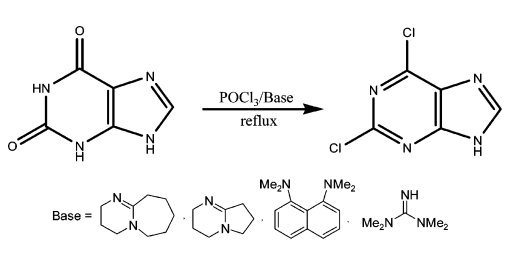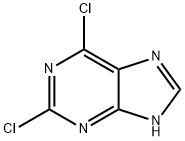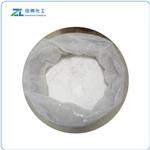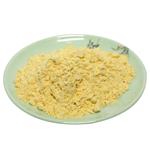2,6-Dichloropurine is prepared in two main ways:
(1) By chlorination of the purine ring structure, e.g., chlorination of xanthine (2,6-dihydroxypurine) with pyrophosphoryl chloride at high temperatures in sealed tubes in the presence of a phase-transfer catalyst or with phosphorus oxychloride under reflux, and chlorination of 6-chloropurine, hypoxanthine, or their N-oxides with phosphorus oxychloride, and chlorination with chlorine gas at low temperatures. Chlorination of 2,6-dithiopurine.
(2) The purine ring is constructed using barbituric acid derivatives or 2,4-dichloro-5,6-diaminopyridine as starting materials. However, both methods are not very suitable for industrial production.
The industrial preparation of 2,6-dichloropurine involves the direct chlorination of xanthine with phosphorus trichloride and a weakly nucleophilic organic base (e.g., amidine, guanidine base, or proton sponge)
[1]. The reaction process is shown below:





